This article contains information about the literary events and publications of 1694.

An emblem book is a book collecting emblems with accompanying explanatory text, typically morals or poems. This category of books was popular in Europe during the 16th and 17th centuries.

An Historical Relation of the Island Ceylon together With somewhat Concerning Severall Remarkable passages of my life that hath hapned since my Deliverance out of Captivity is a book written by the English trader and sailor Robert Knox in 1681. It describes his experiences some years earlier in the Kingdom of Kandy, on the island today known as Sri Lanka. It provides one of the most important contemporary accounts of 17th century Sri Lankan life.
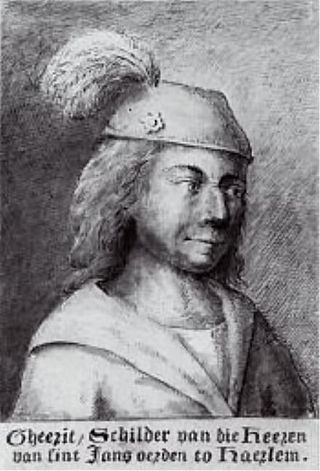
Geertgen tot Sint Jans, also known as Geertgen van Haarlem, Gerrit van Haarlem, Gerrit Gerritsz, Gheertgen, Geerrit, Gheerrit, or any other diminutive form of Gerald, was an Early Netherlandish painter from the northern Low Countries in the Holy Roman Empire. No contemporary documentation of his life has been traced, and the earliest published account of his life and work is from 1604, in Karel van Mander's Schilder-boeck.

Jacob Cats was a Dutch poet, humorist, jurist and politician. He is most famous for his emblem books.

Romeyn de Hooghe was a late Dutch Baroque painter, sculptor, engraver and caricaturist.

Scouting Nederland is the national Scout organisation of the Netherlands with approximately 110,000 members (53,324 male and 54,663 female, 87,000 youth members, as of 2010.

Johannes or Jan Luyken was a Dutch poet, illustrator, and engraver.
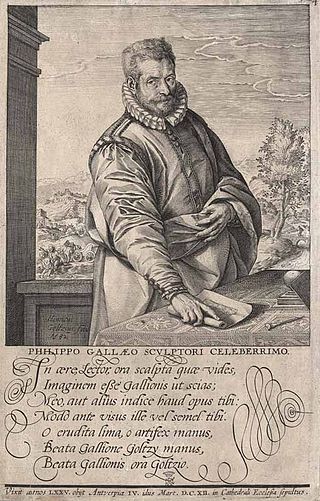
PhilipGalle was a Dutch publisher, best known for publishing old master prints, which he also produced as designer and engraver. He is especially known for his reproductive engravings of paintings.
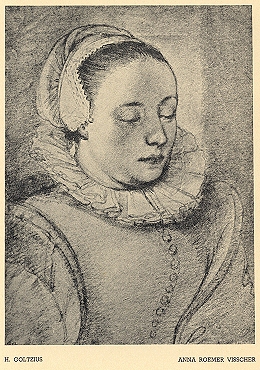
Anna Roemers Visscher was a Dutch artist, poet, and translator.

Shiba Kōkan, born Andō Kichirō (安藤吉次郎) or Katsusaburō (勝三郎), was a Japanese painter and printmaker of the Edo period, famous both for his Western-style yōga paintings, in imitation of Dutch oil painting styles, methods, and themes, which he painted as Kōkan, and his ukiyo-e prints, which he created under the name Harushige, but also producing forgeries of the works of Suzuki Harunobu. He is said to have boasted of his ability to forge the great master so well. He also was engaged in Western learning (Rangaku) in the field of astronomy.

Otto van Veen, also known by his Latinized names Otto Venius or Octavius Vaenius, was a painter, draughtsman, and humanist active primarily in Antwerp and Brussels in the late 16th and early 17th centuries. He is known for his paintings of religious and mythological scenes, allegories and portraits, which he produced in his large workshop in Antwerp. He further designed several emblem books, and was from 1594 or 1595 to 1598 the teacher of Rubens. His role as a classically educated humanist artist, was influential on the young Rubens, who would take on that role himself. He was court painter of successive governors of the Habsburg Netherlands, including the Archdukes Albert and Isabella.

Jan Pieterszoon Saenredam was a Dutch Northern Mannerist painter, printmaker in engraving, and cartographer, and father of the painter of church interiors, Pieter Jansz Saenredam. He is noted for the many allegorical images he created from classical mythology and the Bible.
Boetius à Bolswert was a Flemish engraver of Friesland origin. In his time the paintings of Peter Paul Rubens called forth new endeavours by engravers to imitate or reproduce the breadth, density of mass and dynamic illumination of those works. Boetius Bolswert was an important figure in this movement, not least because he was the elder brother and instructor of the engraver Schelte à Bolswert, whose reproductions of Rubens's landscapes were most highly esteemed in their own right.

De Kreuners are a Flemish rock band established in 1978. They first received interest when they won the first Humo's Rock Rally in 1978, but didn't get a record contract. They self released their first three singles. They recorded their first single Nummer een in London. It became their first success. After these three singles, they signed with Warner Bros. and released in 1981 's Nachts kouder dan buiten. It sold 30,000 copies. By the time of their second album, 1982's Er sterft een beer in de taiga, they were one of Flanders' most successful bands, and the record became gold in two days time. In 1990 they switched to EMI and released their biggest success, the 1990 album Hier en nu, which sold 100,000 copies. The single Ik Wil Je has sold over 1 million copies. Their best of Het beste van de Kreuners is already certified platina before its release date.
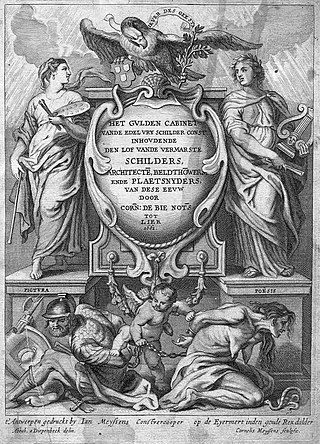
Het Gulden Cabinet vande Edel Vry Schilder-Const or The Golden Cabinet of the Noble Liberal Art of Painting is a book by the 17th-century Flemish notary and rederijker Cornelis de Bie published in Antwerp. Written in the Dutch language, it contains artist biographies and panegyrics with engraved portraits of 16th- and 17th-century artists, predominantly from the Habsburg Netherlands. The work is a very important source of information on the artists it describes. It formed the principal source of information for later art historians such as Arnold Houbraken and Jacob Campo Weyerman. It was published in 1662, although the work also mentions 1661 as date of publication.

Cornelis van Noorde was an 18th-century landscape painter and drawer from the Dutch Republic.

Pieter Mortier, or Pierre Mortier as the publisher of books in French, was the name of three successive generations of booksellers and publishers in the Dutch Republic.
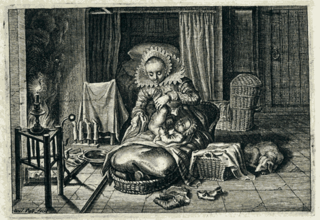
The Emblemata of Zinne-werck is an emblem book, with text by the Dutch poet Johan de Brune and engravings by Adriaen van de Venne. It was first published in Amsterdam in 1624 by Jan Evertsen Cloppenburgh and printed in Middelburg, Zeeland, by Hans van der Hellen. The book was printed in quarto size with copper engravings. A second edition, 1636, consisted of the unsold remains of the first edition with minor changes in the first gathering and added gatherings at the end.
Caspar Luyken was a Dutch illustrator and engraver. He was the son of Jan Luyken with whom he collaborated extensively.

















